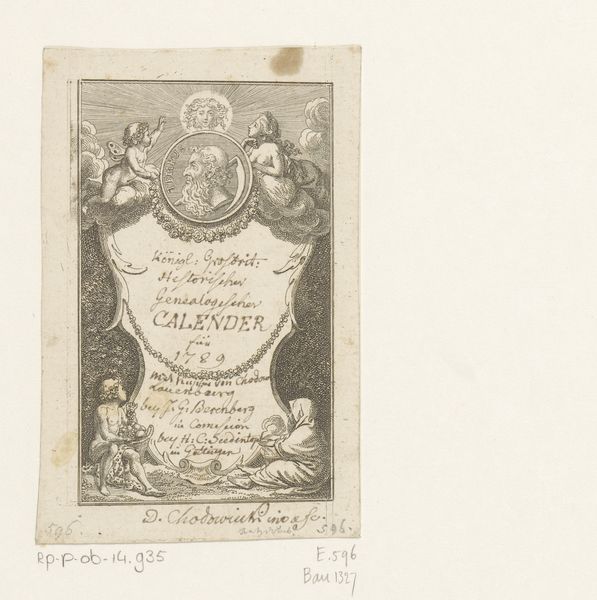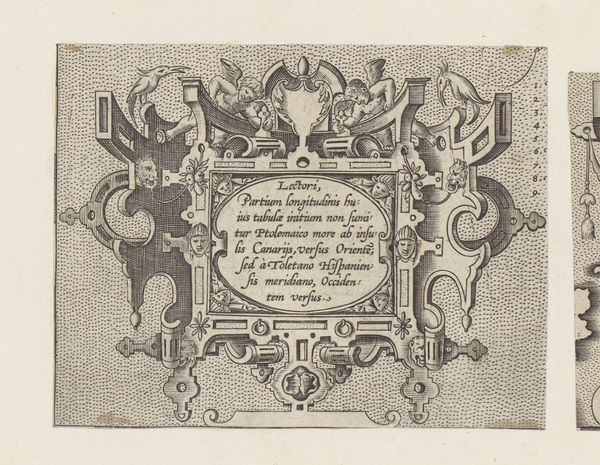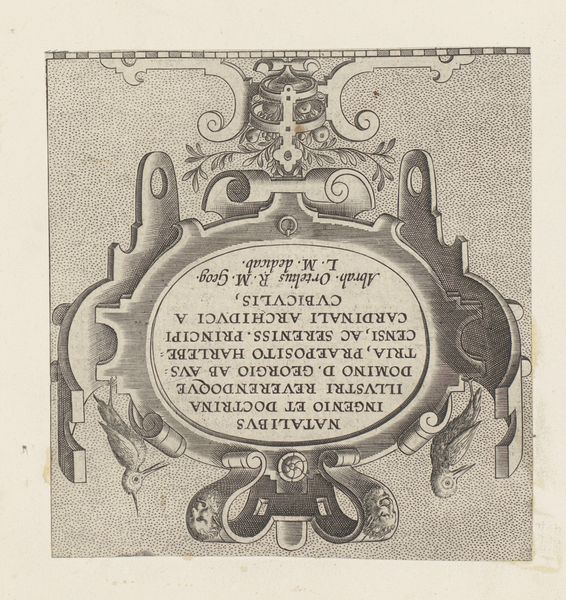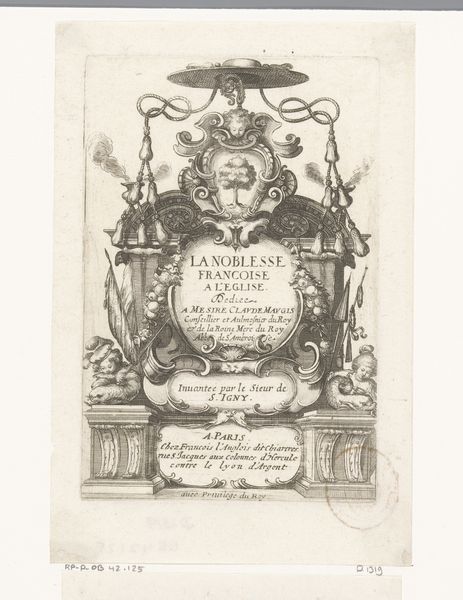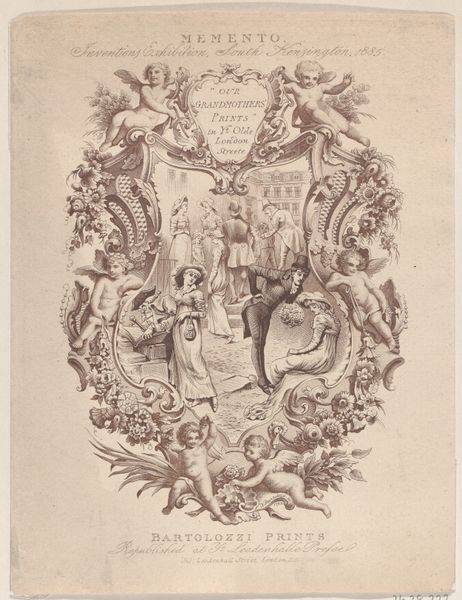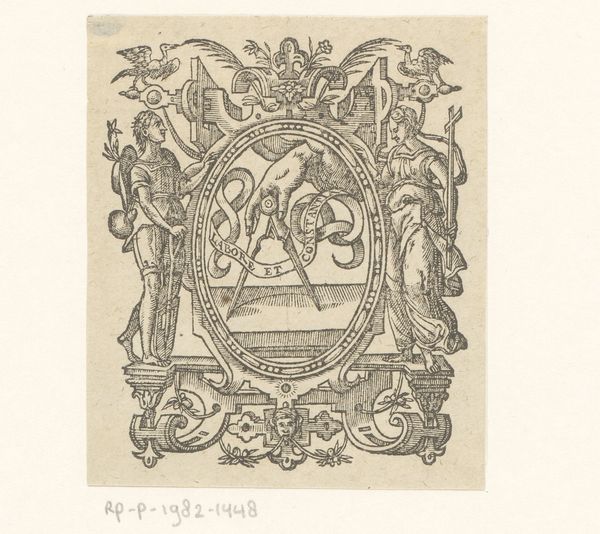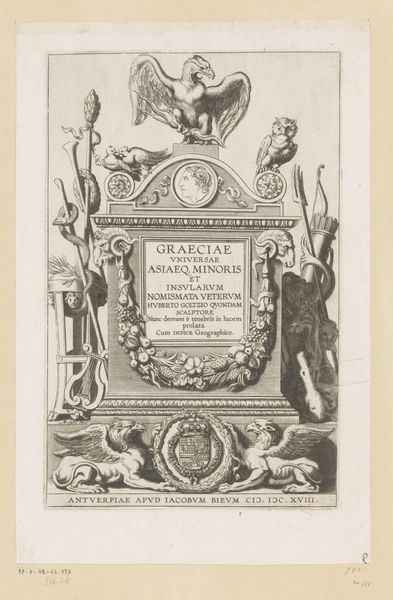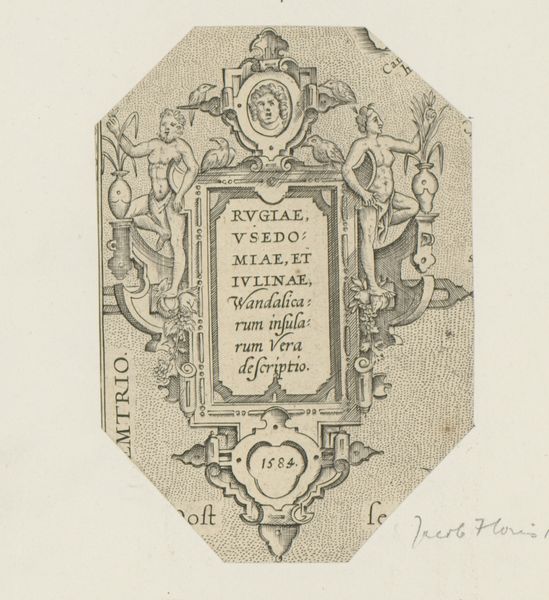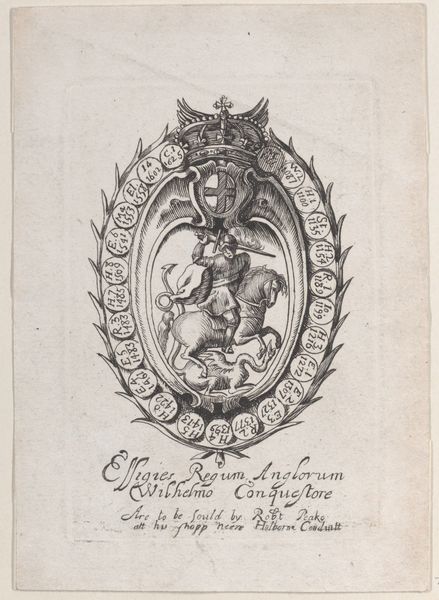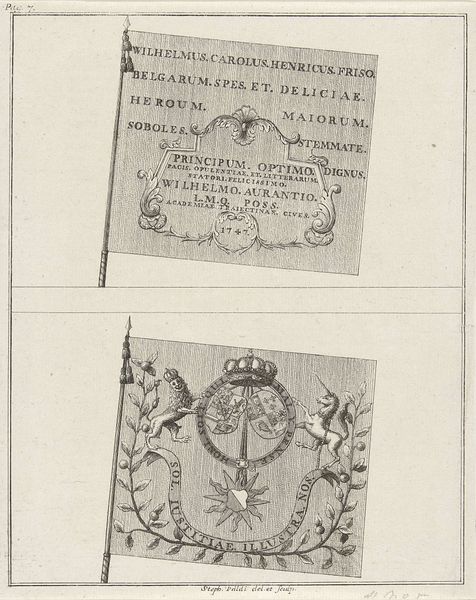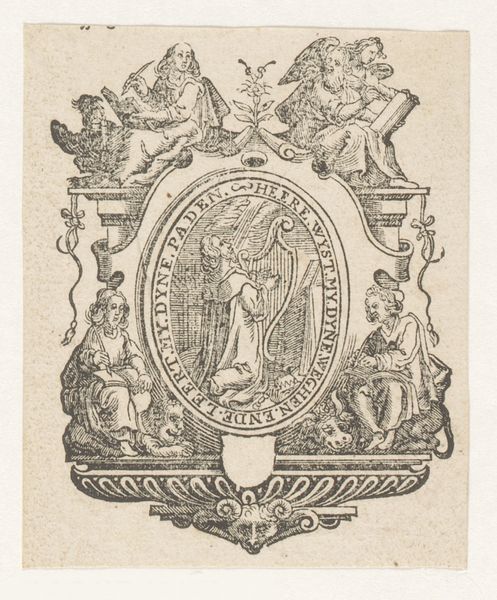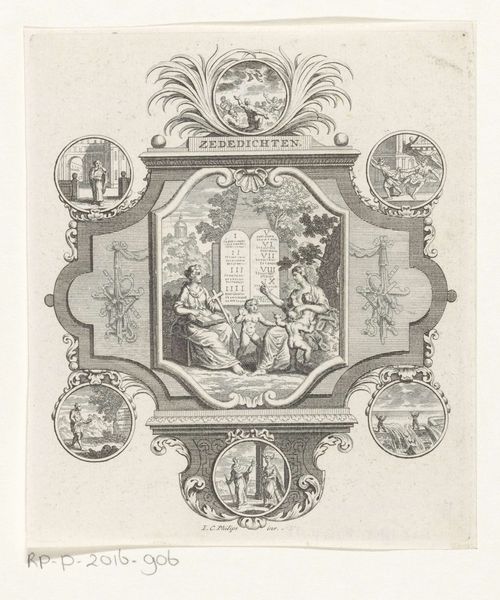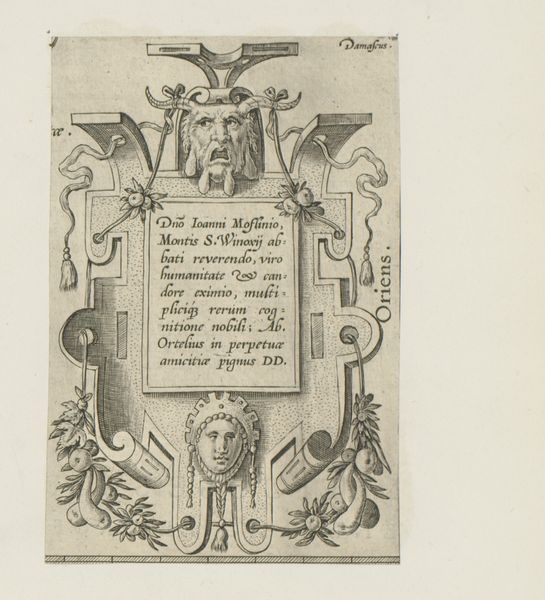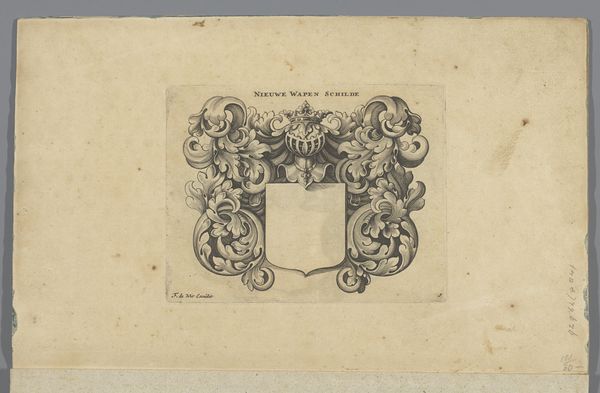
print, engraving
#
baroque
# print
#
old engraving style
#
personal sketchbook
#
fruit
#
decorative-art
#
engraving
Dimensions: height 112 mm, width 76 mm
Copyright: Rijks Museum: Open Domain
Editor: This engraving from 1595, titled "Ovale cartouche met twee maskers en vier trossen fruit", features a decorative cartouche brimming with fruit and masks. It's so intricate! What story do you think it tells? Curator: Well, considering this print is from 1595, it's crucial to think about the means of its production and its circulation within the 16th-century economy of images. It's not simply about the "story" but about the labor involved in its creation and the potential uses it served. How do you think the artist created it and where might such prints have been consumed? Editor: That's true, I hadn't thought about the craft itself. It must have taken tremendous skill and time to engrave such detail. Maybe it was used for book illustrations, or perhaps as decoration sold in print shops? Curator: Exactly! The Baroque style with its ornate details catered to specific tastes and probably was produced by highly skilled workshops. We see the labor involved, and it suggests this object held significant material value. Think about who owned these objects, what were their consumption habits, and how the labor was organised. What do the masks and fruit tell you? Editor: It could speak to wealth and prosperity? Luxury, perhaps? Given the time taken and craftsmanship required it certainly was for those that were wealthy enough to purchase. It’s really quite a fancy sort of advertisement…I suppose? Curator: You're getting at it. This print operates within systems of patronage, craftsmanship, and commerce. Thinking of it as material object deeply embedded within economic relationships challenges traditional interpretations and highlights the complex exchange happening at the time. What more could that cartouche actually *be*? Editor: Seeing the artwork in that light makes me think differently. It isn't just a pretty design, but a document of labour and consumption. It allows us to understand the relationship between the consumer, craft, and culture back then. Thank you for illuminating that, it's truly fascinating. Curator: My pleasure! Considering art in terms of its material origins always unlocks new avenues for understanding the society that produced it.
Comments
No comments
Be the first to comment and join the conversation on the ultimate creative platform.
